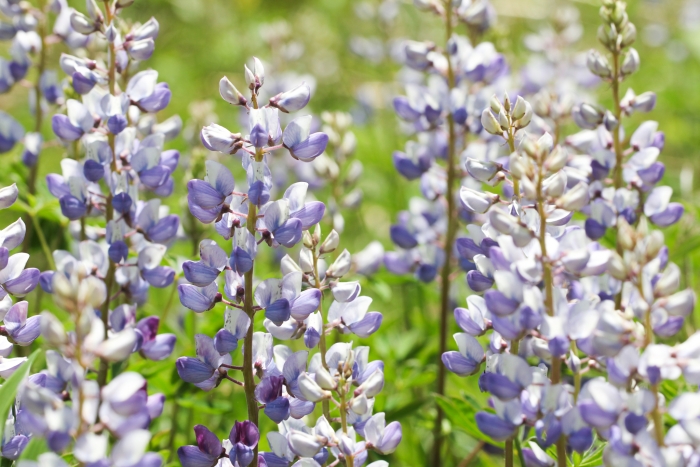Sundial Lupine
(Lupinus perennis)
Sundial Lupine (Lupinus perennis)
/
/

cassi saari
CC BY-SA 4.0



















































Estimated Native Range
Summary
The Sundial Lupine is valued for its nitrogen-fixing ability, which enriches the soil, and its attractive flowers that provide a splash of color in the garden. It is used in wildflower gardens, meadow plantings, and as a border plant. This lupine prefers well-drained, sandy soils and can tolerate drought once established. It thrives in full sun to part shade and requires low to medium amounts of water. While generally low maintenance, it can be susceptible to fungal diseases and aphid infestations. Gardeners should be aware that Lupinus perennis can be toxic to livestock if ingested in large quantities.CC BY-SA 4.0
Plant Description
- Plant Type: Herb
- Height: 1-2 feet
- Width: 0.5-1.5 feet
- Growth Rate: Rapid
- Flower Color: Blue, Purple, White
- Flowering Season: Spring, Summer
- Leaf Retention: Deciduous
Growth Requirements
- Sun: Part Shade, Full Sun
- Water: Low, Medium
- Drainage: Medium, Fast
Common Uses
Bank Stabilization, Bee Garden, Bird Garden, Border Plant, Butterfly Garden, Deer Resistant, Drought Tolerant, Edible*Disclaimer: Easyscape's listed plant edibility is for informational use. Always verify the safety and proper identification of any plant before consumption., Groundcover, Hummingbird Garden, Low Maintenance, Rabbit Resistant, Rock Garden, Showy Flowers
Natural Habitat
native to open woodlands, prairies, and sand dunes in the Eastern and Great Lakes regions of the United States and Ontario
Other Names
Common Names: Wild Lupine, Blue Lupine, Wild Perennial Lupine, Indian Beet, Old Maid’s Bonnets, Ausdauernde Lupine, Lupin Pérenne, Lupin Vivace, Jærlupin, Gruslupin, Tremoço-Perene
Scientific Names: , Lupinus perennis, Lupinus perennis var. perennis, Lupinus perennis f. perennis,
GBIF Accepted Name: Lupinus perennis L.